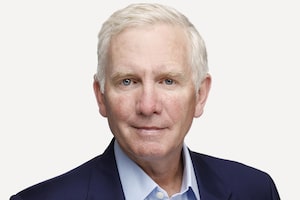Doubtless readers have had a bellyful of horse race numbers, so I write this with trepidation. But I was curious to see what would happen to voting intention polling once the May 2 election was behind us. Would we see buyer's remorse about the Conservative majority? About the massive increase in NDP seats or the crushing setbacks dealt to the Liberal Party and Bloc Québécois?
The answers (no, no, no and no) are evident in Harris-Decima results for The Canadian Press since the election. Over the last two weeks (a total sample of 2,000, all data gathered before the Liberals chose Bob Rae as interim leader) here is what we see:
» The Conservative Party is polling at 38 per cent, down slightly from 39.6 per cent on Election Day.
» The NDP finds 33 per cent support, compared to 30.6 per cent on Election Day.
» The Liberal Party is at 15 per cent, down from an 18.9 per cent result.
» The Bloc is at 22 per cent in Quebec; 23.4 per cent was their total on May 2.
Canadians usually express comfort with what we collectively do on Election Days, despite the fact our first past the post system produces governments that most people didn't vote for. Voters whose favourite parties didn't win mostly respect the process and accept the outcome without rancor, and often more than a little optimism.
So in some respects these findings are not surprising. However this election did more than a little tinkering with the political lineup in Ottawa: It dealt severe blows to two parties that had been fixtures in Canadian politics, the Liberals and the Bloc, and has elevated the NDP to a fundamentally different role. It was conceivable that such radical change might have produced some anxiety.
Instead, here are a few highlights of how this realignment has settled and in some respects maybe even deepened, meaning the Bloc and the Liberals have major work ahead of them if they are to again become potent forces in Canadian politics.
» In the latest week results, the NDP are running at a new high of 49 per cent in Quebec. If all the coverage of so-called Vegas MP Ruth Ellen Brosseau was going to rattle Quebec voters, there's no evidence that happened. If anything, Quebeckers seem pretty enthused with the sense of freshness of their representation in Ottawa.
» In Ontario, the NDP is at 32 per cent, seven points behind the Conservative Party, with the Liberals dropping to 19 per cent, six points below their result on election night.
» Among female voters, the NDP leads at 37 per cent nationally, compared to 33 per cent for the Conservatives, and a stunning 16 per cent for the Liberal Party.
» Among men, the Conservatives are at 42 per cent, the NDP at 30 per cent and the Liberals at a record low of 14%.
The message to the Liberals could not be much clearer. Waiting for the old order of things to reassert itself could prove futile. Not rushing to mend the hole in the hull could be disastrous. The Liberal brand needed to put its strongest leadership forward, and convey a renewed sense of purpose and vitality - now, not some time off into the future. Disappearing into a haze of structural introspection (what about TPA's, etc.) for a couple of years, just as public funding is drying up, could lock in this new "downward spiral" in the party's fortunes.
For the Bloc, the challenge is different but no less daunting. To recover, the Bloc needs three conditions, none of which is all that likely. First, passion for separatism - not just affection for nationalism - has to grow, sharply. Second, the Conservatives have to do things so obnoxious to Quebec voters to create a sense of collective grievance. And now, they also need the NDP to look like an ineffective voice for that anger, if and when it materializes.
So far, if there is no honeymoon evident for the Conservatives, there's certainly no hangover. For the NDP, there is more romance than remorse in these latest numbers.
 Bruce Anderson
Bruce Anderson